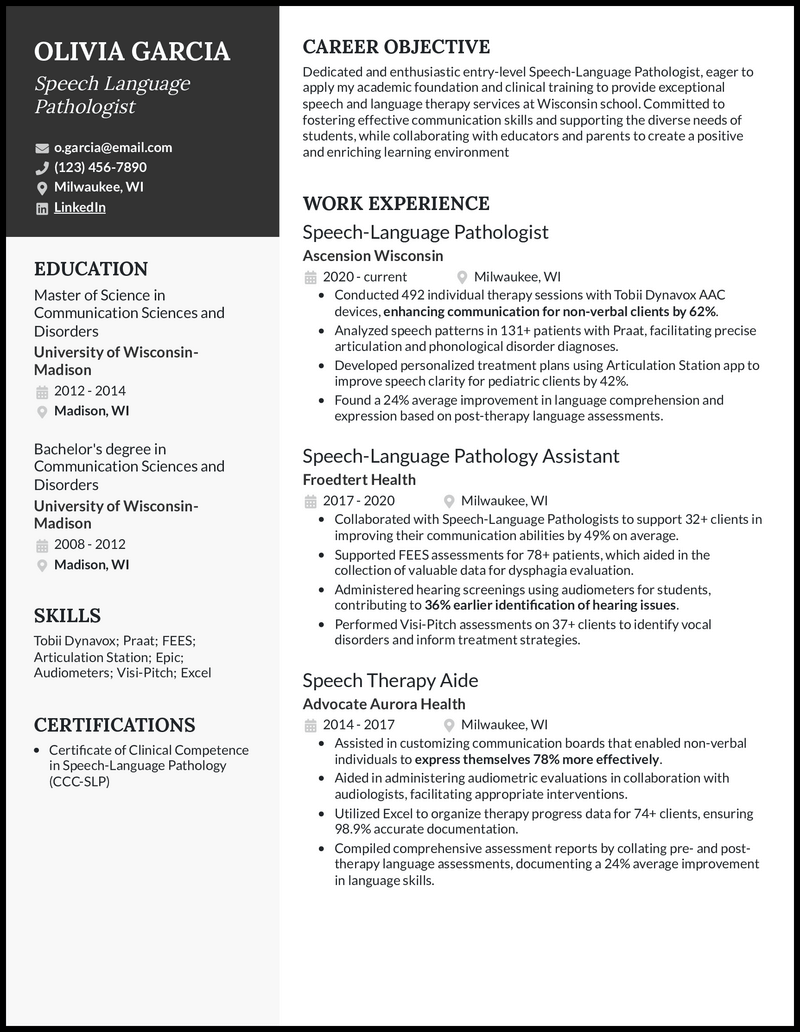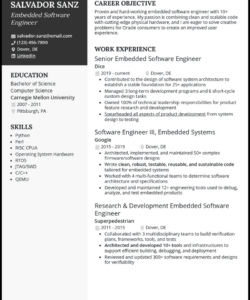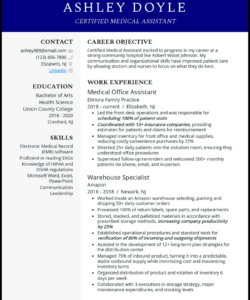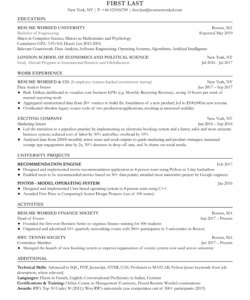Embarking on a job search as a speech language pathologist is an exciting journey, but it often starts with a single, crucial document: your resume. This powerful tool is your first impression, a snapshot of your skills, experience, and dedication to helping others communicate effectively. Crafting a resume that truly stands out in a competitive field can feel like a daunting task, requiring a blend of strategic content and compelling presentation.
Fortunately, you dont have to start from scratch. Understanding the key components of a winning resume and how to present them professionally can significantly boost your chances of landing that dream interview. Whether youre a recent graduate or a seasoned professional looking for a new challenge, a well-structured resume is your ticket to showcasing your unique value to potential employers.
Building a Powerful SLP Resume: Beyond Just the Template
While a good template provides the framework, the true strength of your speech language pathologist resume lies in its content. Think of your resume as a marketing document for your professional brand. It needs to highlight not just what youve done, but the impact of your work, your specific skills, and your unique approach to patient care and collaboration. Focus on quantifiable achievements whenever possible. Instead of saying “worked with patients,” try “managed a caseload of 30 pediatric dysphagia patients, reducing aspiration risks by 25%.” This kind of detail paints a vivid picture of your capabilities.

Your resume should clearly articulate your understanding of various communication disorders, assessment tools, and intervention strategies. Employers are looking for candidates who can hit the ground running, demonstrating both clinical expertise and a deep commitment to ethical practice. Consider including specific patient populations you have experience with, such as pediatrics, geriatrics, or individuals with neurological disorders, to tailor your application to specific job descriptions. Showcasing your adaptability and willingness to learn new methodologies will also set you apart.
Beyond the clinical skills, remember to emphasize your soft skills. Collaboration with interdisciplinary teams, communication with families, empathy, problem-solving, and adaptability are all highly valued in the SLP field. Provide examples of how you have utilized these skills to improve patient outcomes or contribute positively to a team environment. A strong resume balances your technical proficiency with your interpersonal strengths, painting a holistic picture of you as a professional.
Ultimately, every section of your resume should contribute to telling a compelling story about why you are the ideal candidate for the role. Its not just about listing duties; its about demonstrating your value and your passion for the profession.
Key Sections to Prioritize
- Professional Summary or Objective: A concise overview of your career goals and what you bring to the table. Tailor this for each application.
- Clinical Experience: Detail your roles, responsibilities, achievements, and the specific populations you worked with. Use action verbs.
- Education: List your degrees, institutions, graduation dates, and relevant coursework or specializations.
- Skills: Include both clinical skills (e.g., specific assessments, therapeutic techniques) and soft skills (e.g., communication, teamwork).
- Licenses and Certifications: Crucial for an SLP; include state licenses, ASHA CCCs, and any other relevant certifications.
Unlocking Your Success: The Role of a Speech Language Pathologist Resume Template
Once you have robust content, the right presentation ensures it gets noticed. This is where a well-chosen speech language pathologist resume template becomes incredibly valuable. A template provides a professional, organized layout that guides the reader’s eye, making it easier for recruiters and hiring managers to quickly grasp your qualifications. It ensures consistency in formatting, font choices, and spacing, projecting an image of meticulousness and professionalism. This attention to detail reflects positively on your overall work ethic.
Using a template also significantly streamlines the resume creation process. Instead of spending hours fussing over margins and alignment, you can focus on perfecting your content. Many templates are designed with Applicant Tracking Systems ATS in mind, meaning they use clean layouts and standard headings that these software programs can easily parse. This increases the likelihood that your resume will make it past the initial screening and into human hands, which is a critical first step in todays digital job market.
When selecting a template, prioritize readability and clarity over overly complex designs. While some visual flair can be good, ensure it doesn’t detract from your content. A good template should allow your skills and experience to shine without overwhelming the reader with unnecessary graphics or unusual fonts. Consider a design that reflects your personal style while adhering to professional standards. Think about the type of organization you are applying to – a more traditional hospital might prefer a classic layout, while a private practice might be open to something a bit more modern.
Finally, remember that a template is a starting point, not the finished product. Always customize it with your unique information and adapt it slightly for each job application to highlight the most relevant experiences. Proofread meticulously for any typos or grammatical errors. A flawless presentation, combined with compelling content, will give your resume the powerful edge it needs to stand out and help you secure the rewarding SLP position you deserve.


